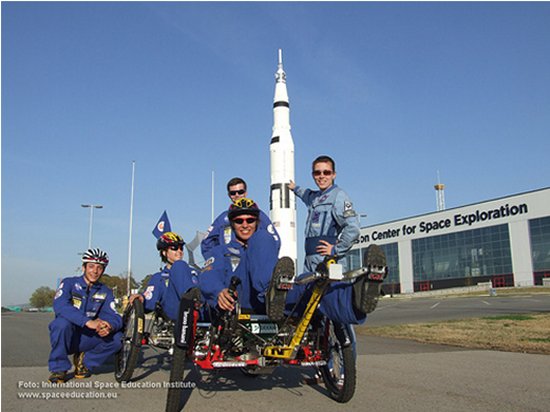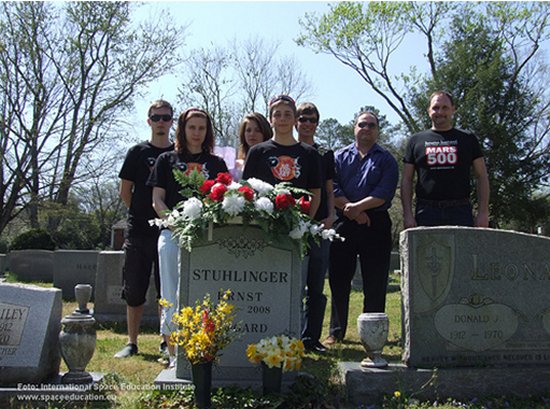It is upon us! Buckle your seatbelts and give the team advisor a Maalox — it’s time to assault the course and go for the gold!
Registration began today for teams participating in the 18th annual NASA Great Moonbuggy Race. We’ll hold our opening ceremonies tonight at the U.S. Space & Rocket Center in Huntsville, Ala.
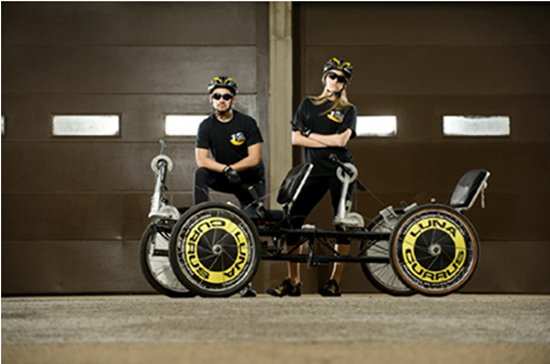
Like all our teams, Huntsville Center for Technology racers Ezra Logreira and Karine
Wittenborg are itching to roll. Our unofficial “Face of the Race” duo for 2011,
they’re both seniors, headed to the University of Alabama in Birmingham this fall.
But they want one more win for HCT before they go… (MSFC/David Higginbotham)
We’ll welcome old friends and new, go over the guidelines and walk the winding, half-mile race course (which, as you read this, is getting the finishing touches today from the Space & Rocket Center’s elite crew of groundskeepers and “moon mechanics,” under the watchful eye of head axle-breaker Dennis Gallagher… who occasionally breaks into villainous MWAHAHA laughter, we kid you not).
And tomorrow, April 1, at 7 a.m. Central time, the buggies start to roll.
So let’s wrap up our look at moonbuggy hardware with a few final elements — some critical, some cosmetic, but every one of value to your performance. And possibly your posterior.
“Steer! STEER!”
Steering configurations are as varied among moonbuggies as any other element, but the relative simplicity of the hardware — upright or drop handlebars (or a simpler straight handle or riser bar, like that on a mountain bike) which turn the fork and front wheels via a stem rotating in the headset — may mislead teams into giving it too little thought.
The design is paramount here. How are you configuring your riders — side by side or one in front and one in back? Will they share steering duties, or does just one of them take on the responsibility of guiding the vehicle? Do the style and position of your handlebars match the seating angle of your riders? If they’re seated low at a backward angle for better pushing power, for example, you don’t want upright handlebars that force them to awkwardly lean up or forward to maintain control.
Look at a recumbent bike, with under-seat or over-seat steering. You may want to riff on that idea, and design a buggy with steering arms or joysticks positioned at the sides, permitting the riders the most aerodynamic profile and ergonomically satisfying ride positions possible. But testing must be rigorous. Does the system have the necessary responsiveness? How much power will it take to rake that speeding buggy around a sharp turn? Can “lowrider steering” measure up?
Race organizer Gallagher, a NASA astrophysicist who works at the Marshall Space Flight Center, is always quick to point to mountain bikes as a good jumping-off point for basic buggy design, and this is another area where they can give you some good ideas. Especially consider the wider widths of mountain bike handlebars or risers, he says — which can dramatically improve handling.
“And be sure they have some play to them,” he adds. “This terrain’s really uneven, so they’ll need to be able to handle a lot of hard jerks and jolts.” (Mwahaha indeed.)
“Brake! BRAKE!”
Dennis’s fellow engineer and race planner Tom Hancock, chair of the American Institute of Aeronautics and AstronauticsAlabama/Mississippi section, agrees steering is important… but he’s more concerned about brakes. He’s one of the guys who’s out there the night before the race, laying down something like 175 bales of hay — to make sure careening buggies have something soft to run into when they get out of control.
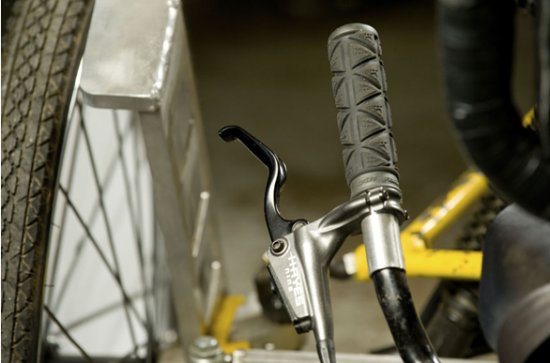
See this? This is important. This is the thing that keeps your advisor’s heart rate
down in a safe zone. Especially during that hairpin left turn right after Obstacle 3.
(MSFC/David Higginbotham)
Hancock says brakes come in all flavors among buggies — from the crude rim brakes found on regular bicycles; to internal hub or disc brakes for sturdier off-road or tandem bikes; to direct-pull or linear-pull brakes like the “V-brakes” found on many BMX and mountain bikes.
With rim brakes, friction pads are compressed against the wheel rims themselves. Among internal hub brakes, they’re contained within the hub of the wheel. Your best options, our experts agree, are disc brakes, which have a separate rotor for braking, or linear-pull brakes, which seem to have the most hardware flexibility, work well with suspension systems based on more rugged off-road bikes, and stand up best to hard, abrupt braking.
Whatever your configuration, Hancock says, whether they’re hand-operated or controlled by foot-pedals, the brakes are absolutely critical, and should be thoroughly tested repeatedly before race day.
“Buggies can pick up so much speed out there, and we’re always surprised to see so many with brakes only on the front, or only on one side,” he says. “That’s because they’ve been salvaged off a regular bicycle, of course, and the end result is they drag really hard to one side.”
And that’s no good, especially if a large rider is paired with a small one. “We see guys close to 200 pounds matched with girls around 110-120,” he says. “Add the weight of the vehicle, and a few critical heavy-side turns on the track where vehicles may pull three or four Gs…”
It’s a recipe for trouble. “Your welds may be good, but they may not be that good,” he laughs. “Or the center of gravity may be too high, and you risk tipping over.”
Riders can offset those dangers — pick a solid braking systems and train your drivers to apply them properly.
Don’t settle for the cheap seats
Let’s move on to one of the most memorable elements of the moonbuggy — or it will be, after your riders disembark at the end of the course and discuss with you why you chose to skimp on seating.
“Bucket seats are the best,” Hancock says. “Find something of quality that conforms, if possible, to the lower back and rear end. You want your drivers seated solidly to provide lots of lower-back pushing power.
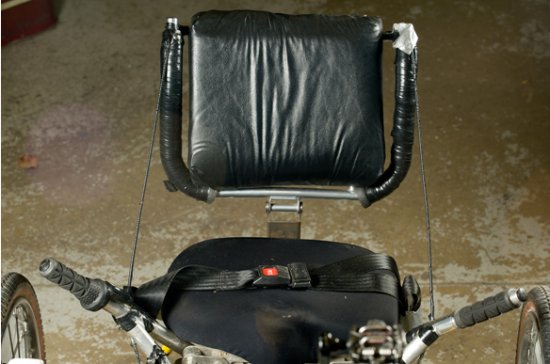
The rear seat on a Huntsville Center for Technology buggy. Note the ergonomically
sound handlebar placement. (MSFC/David Higginbotham)
Simple folding seats can snap, Hancock warns — all the riders’ mass and energy is being centered in the lower back, and flimsy chairs won’t hold up. Likewise, saddles — simple bicycle-style seating — won’t suffice, because there’s no lower-back pushing power there at all. “That’s just asking for pain,” he says.
He also advises against angled seatbacks. He’s seen teams cant the back rests 15-20 degrees — maybe in an effort to be more aerodynamic. “But depending on the configuration of the buggy, now you’re expending a lot of energy just to stay up straight to pedal,” he says.
Whatever your seat of choice, Gallagher reminds all racers to include strong, buckling seat belts. No Velcro, no rope, no duct tape. “Seat belts are NOT part of the façade,” he says.
Finishing touches: The accessories
The façade is where we’ll round out this exploration of the moonbuggy’s inner workings. This race is a historic legacy, after all, celebrating the Apollo-era Lunar Roving Vehicles that rolled across the surface of the moon in 1971 and 1972.
It’s been 40 years since those fabled moonbuggies raised the bar for off-road racing, and your buggy needs a few accessories that put the finishing touches on this homage to NASA ingenuity and can-do spirit.
According to the race guidelines, each buggy must have a simulated TV camera approximately 2 inches by 3 inches by 6 inches or so; a simulated high-gain antenna with a reflector approximately 2 feet in diameter; two simulated batteries (roughly 4 inches by 6 inches by 8 inches); “moon dust abatement” devices, better known as wheel covers (or sweet, sweet fenders); a simulated electronic-controls radio and display console (totaling an approximate 1 cubic foot in size); and a national or school flag. Items get checked before and after each run… and you want to have the same set of goodies at the end that you had at the start.
Secure your gizmos,” says Hancock. “Otherwise, it can cost you. You lose a point for every piece that comes off. People drop fenders, cardboard instrument boxes and other things all over the track.”
He suggests that new racers in particular keep everything simple to start. Try to keep accessories out of the way of the riders, so they don’t inadvertently knock them loose. “Small, secure and out of the way,” he advises, then chuckles. “One of the most novel approaches I ever saw was a team that just had a sign on the side of the steering column. It said, ‘Our whole instrument system is on the side of the steering column.’ ” Not exactly kosher — but it kept the teams’ focus on the bigger challenges.

Huntsville Center for Technology keeps its accessories, such as this mini-camera,
anchored and out of the drivers’ way. Don’t get penalized when that fancy contraption
comes flying off! (MSFC/David Higginbotham)
Don’t be afraid to get creative, though. “Some accessories are really great,” Hancock says. “We’ve had kids make working displays. A lot of them will bring a video camera and mount it on the front end to tape their run.” To get a look at what’s possible, check out the buggy from last year’s winning high school team, the International Space Education Institute. Their GPS tracking and other on-buggy hardware is mind-blowing!
And visitors can get an actual buggy-cam experience — shot by high school racers in 2009 — inside the U.S. Space & Rocket Center at the NASA Education Competition exhibit. Just look for the mini-moonbuggies.
Drivers — to the starting line!
As the race draws ever nearer, Gallagher and Hancock reflect on what it offers — practical, real world engineering challenges that may open new career doors for many of our intrepid racers.
“This is professional experience,” Gallagher says. “Design work, specc’ing out your requirements, fabrication, welding, rigorous testing… This is the real deal, and it leaves an impact.”
For his part, Hancock loves watching new teams tackle the course for the first time. “They may come from small towns, and their team may not have all the resources of bigger school systems,” he says. “But so many show up with work that is just great — intuitive, slick and well thought out. They may not have all the materials to take their ideas to the next level, but the spark is there. The flame is lit.”
Expect that inventive flame to deliver no end of unique, unexpected moonbuggy designs and configurations when we take the course on April 1. We may see three-wheelers. TWO-wheelers. Anything is possible. One team years ago designed something that looked like an exercise machine — both drivers were standing up. “Worked great til they hit the first obstacle,” Gallagher laughs.
“We had a tank once,” Hancock remembers. “It was eight feet long, it wasn’t very well put together, it was dropping cleats all over the course…” He smiles. “But it was COOL.”
Be safe out there, teams.
And be cool.
You’re invited to watch live race coverage all day Friday, April 1, via UStream at http://www.ustream.tv/channel/nasa-msfc. The race is expected to start at 7 a.m. Central time. Our deepest thanks to Dennis Gallagher and Tom Hancock for their help in developing this blog series. For those interested in learning more about these good folks who help us execute the NASA Great Moonbuggy Race year after year, you can read more about them here.

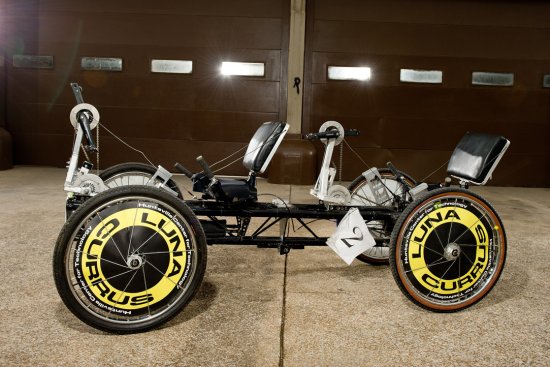

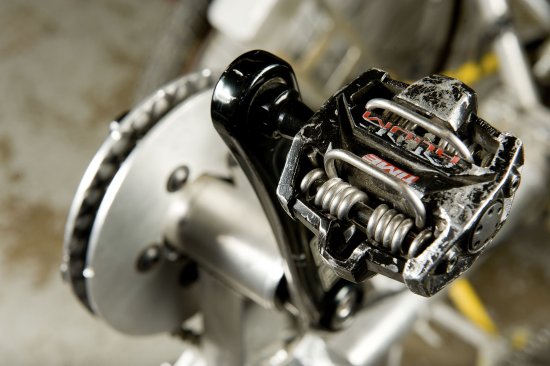
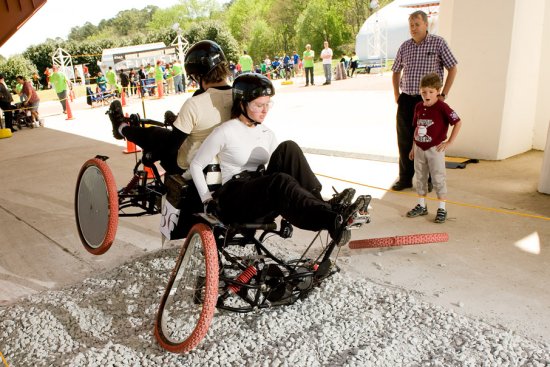
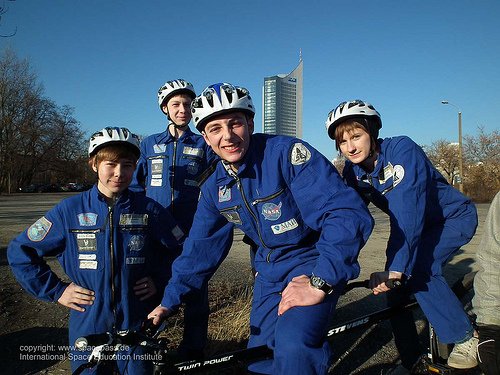
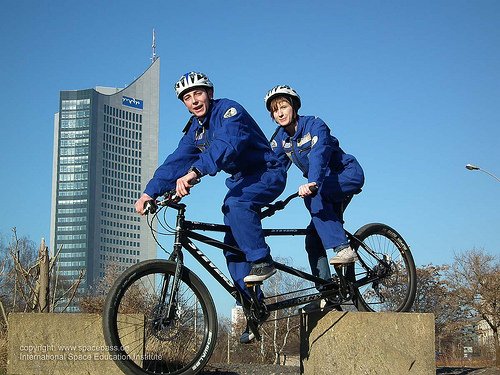
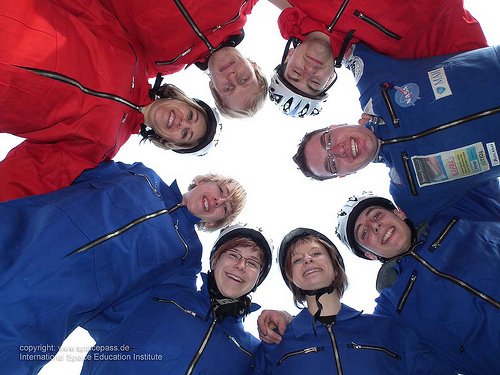

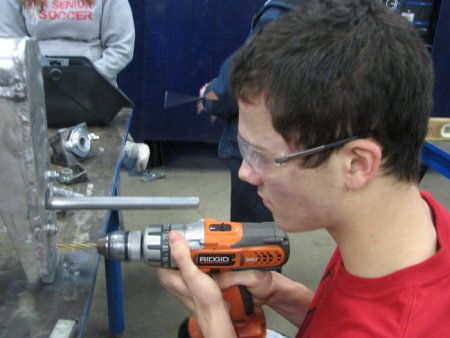
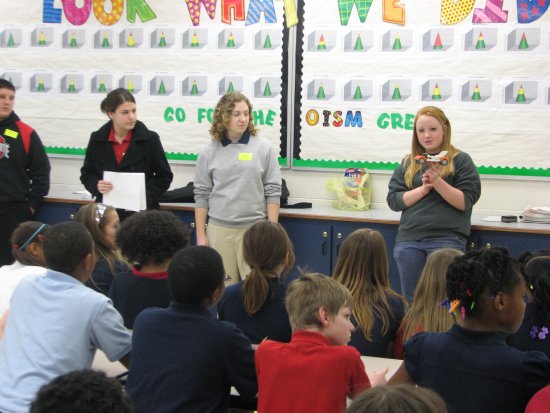

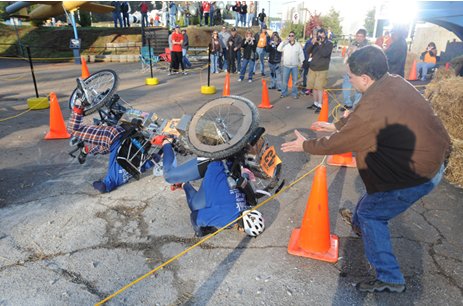
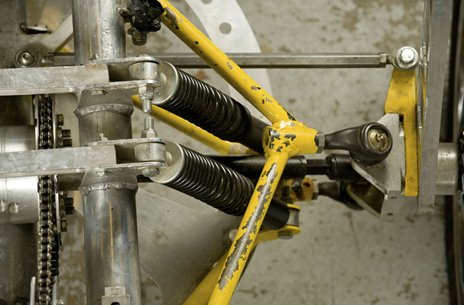
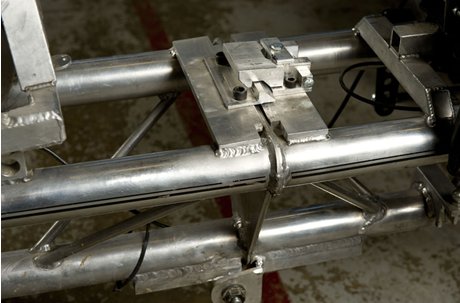
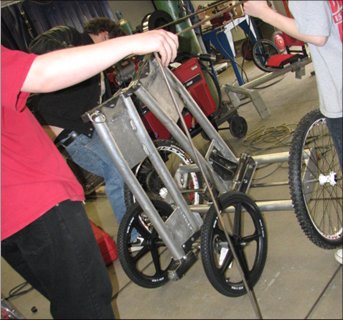
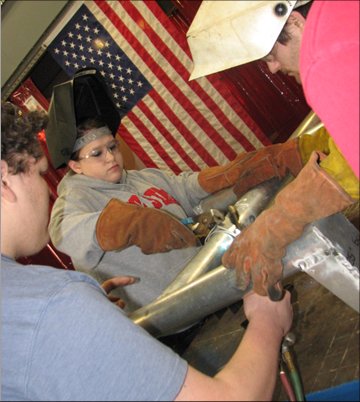
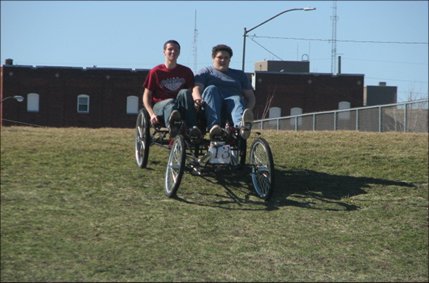


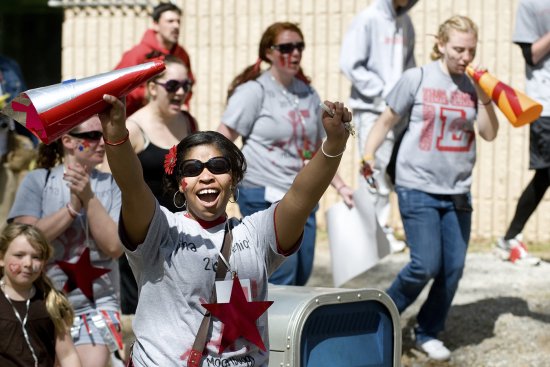
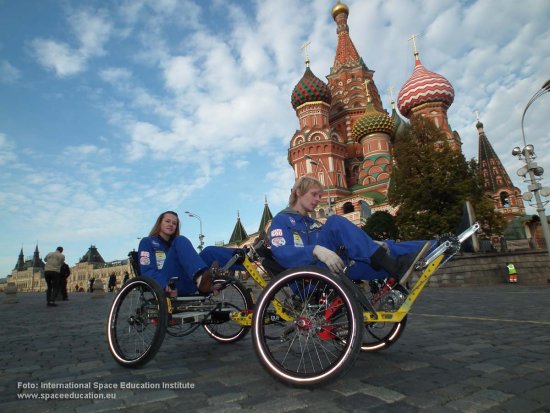
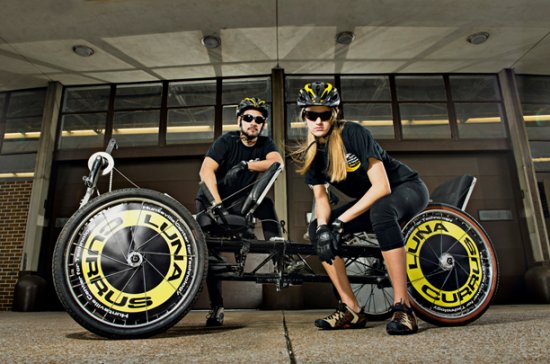
 During my first night in America, during the night I can’t sleep because I have a headache and I think I’m getting a cold. At 8 o’clock in the morning we meet at the lobby of the hotel and have breakfast together. We eat typical food of America, like bagels, muffins, waffles and orange juice and coffee. After the very sweet breakfast we get together for a briefing.
During my first night in America, during the night I can’t sleep because I have a headache and I think I’m getting a cold. At 8 o’clock in the morning we meet at the lobby of the hotel and have breakfast together. We eat typical food of America, like bagels, muffins, waffles and orange juice and coffee. After the very sweet breakfast we get together for a briefing. 